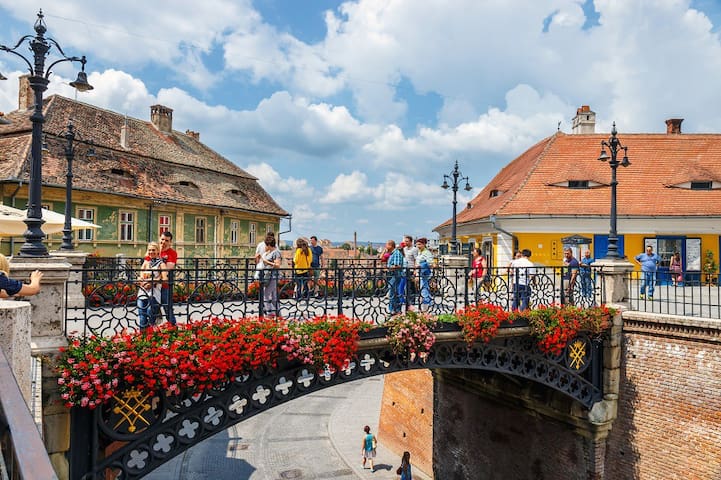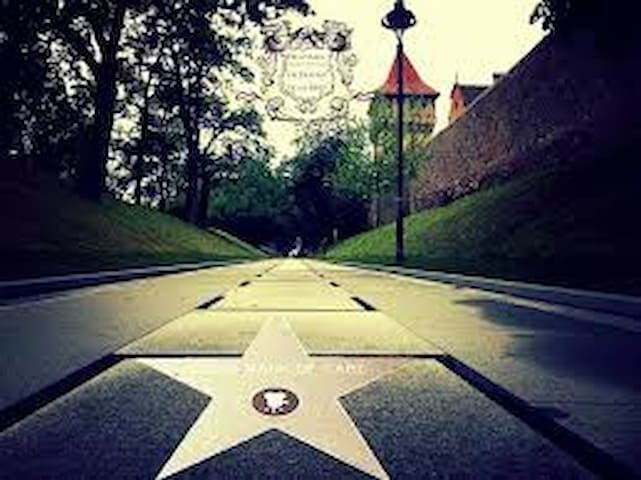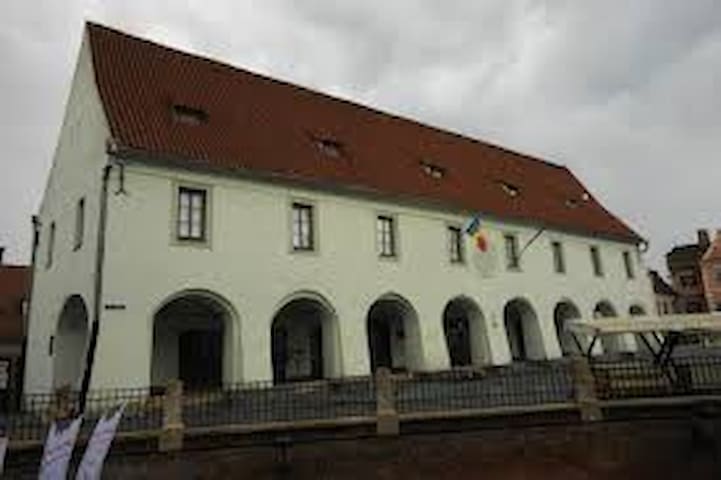Walking around Sibiu
Originally, the bridge was made of wood. About 200 years later, in 1859, the Bridge of Lies was rebuilt, being the first cast iron bridge in Romania. The pedestrian bridge built over the street Ocnei connects the Lower Town to the Upper Town. Eleven years ago, the Bridge of Lies has been included on the historical monuments in the county of Sibiu and is a true symbol of the former European Capital of Culture.
The legends
Number one and my personal favorite legend: the lie detector. It is said that the bridge has the power to tell if somebody is lying at the moment of crossing it and makes strange noises as if it would collapse and punish the liar. I recommend you test this one out for yourself when crossing the bridge.
Number two: the Casanova myth. The Bridge of Lies supposedly earned its name because it was a meeting place for first dates. Cadets from the military academy would meet girls and make promises which they never intended to keep. So be aware of the promises you hear, when walking on this bridge!
54 íbúar mæla með
Brú lyga
Piața MicăOriginally, the bridge was made of wood. About 200 years later, in 1859, the Bridge of Lies was rebuilt, being the first cast iron bridge in Romania. The pedestrian bridge built over the street Ocnei connects the Lower Town to the Upper Town. Eleven years ago, the Bridge of Lies has been included on the historical monuments in the county of Sibiu and is a true symbol of the former European Capital of Culture.
The legends
Number one and my personal favorite legend: the lie detector. It is said that the bridge has the power to tell if somebody is lying at the moment of crossing it and makes strange noises as if it would collapse and punish the liar. I recommend you test this one out for yourself when crossing the bridge.
Number two: the Casanova myth. The Bridge of Lies supposedly earned its name because it was a meeting place for first dates. Cadets from the military academy would meet girls and make promises which they never intended to keep. So be aware of the promises you hear, when walking on this bridge!
The Walk of Fame from Sibiu is located in Parcul Cetăţii (EN: The Park of the Fortress) which is very close to sala Thalia - the first theater created in Romania, and along the walls that represent the fortification of the ancient city.
The Walk of Fame is a pretty new project which was born in 2013, being placed between two fortification walls that are meant to make the celebrities who earn a star on the alley, feel protected and being part of the citadel.
Sibiu Walk of Fame
Strada CetățiiThe Walk of Fame from Sibiu is located in Parcul Cetăţii (EN: The Park of the Fortress) which is very close to sala Thalia - the first theater created in Romania, and along the walls that represent the fortification of the ancient city.
The Walk of Fame is a pretty new project which was born in 2013, being placed between two fortification walls that are meant to make the celebrities who earn a star on the alley, feel protected and being part of the citadel.
The former Council Tower links Piaţa Mare with its smaller sister square, Piaţa Mică. First built in the 13th century, and refortified in the 16th, it has served as storage for grain, a prison and a watchtower across its long history.
48 íbúar mæla með
The Council Tower
1 Piața MicăThe former Council Tower links Piaţa Mare with its smaller sister square, Piaţa Mică. First built in the 13th century, and refortified in the 16th, it has served as storage for grain, a prison and a watchtower across its long history.
Sibiu dýragarður
142 Calea DumbrăviiThe Art House - Emil Sigerus Museum of Sibiu is known as 'Butchers' Hall and is one of the oldest „guild houses”.
Documentary certified in 1370, the historical monument located in the Small Square of Sibiu, is one of the most interesting building that embodies the type of a medieval trading hall.
The touristic site - "Hall Butchers" is a two level building. The ground floor worked as commercial space dedicated to the cutting and selling of meat. The floor of the building worked in the past as the meeting place of butchers, but for a brief period served as headquarters for the furriers guild.
Between 1967-1972 held its first restoration work, during which the roof of the building has regained its original appearance. Also with these papers have been reopened ground floor arcades.
Arts House - Butchers Guild Hall
21 Piața MicăThe Art House - Emil Sigerus Museum of Sibiu is known as 'Butchers' Hall and is one of the oldest „guild houses”.
Documentary certified in 1370, the historical monument located in the Small Square of Sibiu, is one of the most interesting building that embodies the type of a medieval trading hall.
The touristic site - "Hall Butchers" is a two level building. The ground floor worked as commercial space dedicated to the cutting and selling of meat. The floor of the building worked in the past as the meeting place of butchers, but for a brief period served as headquarters for the furriers guild.
Between 1967-1972 held its first restoration work, during which the roof of the building has regained its original appearance. Also with these papers have been reopened ground floor arcades.
The Brukenthal National Museum is a museum, erected in the late 18th century in Sibiu, Transylvania, Romania, housed in the palace of Samuel von Brukenthal — who was Habsburg governor of Transylvania and who established its first collections around 1790. The collections were officially opened to the public in 1817, making it the oldest institution of its kind in Romania.
It is a complex of six museums, which, without being separate administrative entities, are situated in different locations around the city and have their own distinct cultural programmes.
128 íbúar mæla með
Brukenthal þjóðarsafn
4 - 5 Piața MareThe Brukenthal National Museum is a museum, erected in the late 18th century in Sibiu, Transylvania, Romania, housed in the palace of Samuel von Brukenthal — who was Habsburg governor of Transylvania and who established its first collections around 1790. The collections were officially opened to the public in 1817, making it the oldest institution of its kind in Romania.
It is a complex of six museums, which, without being separate administrative entities, are situated in different locations around the city and have their own distinct cultural programmes.
The ASTRA Museum of Folkloric Traditional Civilization is situated in the Dumbrava Forest, at a distance of 4 kilometers from the city.
The museum functions since 1963 under the name of the Museum of Folkloric Technique and stretches over 96 hectares and an exhibition circuit of 10 kilometers in length.
The museum hosts original monuments representative for the values of the Romanian village.
97 íbúar mæla með
ASTRA safn
16 Strada Pădurea DumbravaThe ASTRA Museum of Folkloric Traditional Civilization is situated in the Dumbrava Forest, at a distance of 4 kilometers from the city.
The museum functions since 1963 under the name of the Museum of Folkloric Technique and stretches over 96 hectares and an exhibition circuit of 10 kilometers in length.
The museum hosts original monuments representative for the values of the Romanian village.
Local Restaurants which I Recommend
Max
22 Strada Târgul PeșteluiLa Cuptor
7 9 MaiBenjamin Steakhouse & Bar
1 Strada Alexandru Dimitrie XenopolHochmeister delikat'essen
9 Strada Timotei PopoviciKombinat Gastro-Brewery
FN Strada BerărieiCrama Sibiană
31 Piața MicăJules Bistro
6 Strada Mitropoliei


